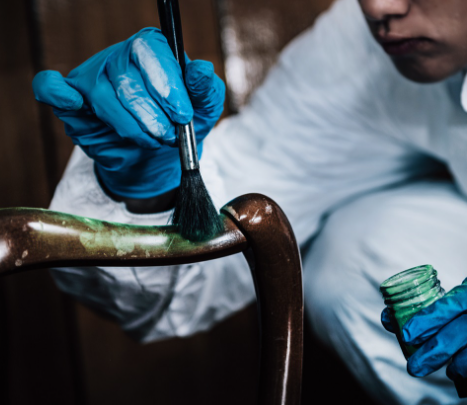 Let's take a look at some of the newest technologies in the criminal justice system.
Let's take a look at some of the newest technologies in the criminal justice system.Systems for Detection and Positioning
In the field of criminal justice, there have been several unique technical advances. Different positioning and detection systems, such as GIS and GPS systems, are among them.
Systems for detecting gunshots (GDS).
Systems that identify license plates automatically.
Information Exchange & Databases
Another critical technical tool in criminal justice is the electronic database. Profiling and fingerprints are dealt with by a number of database systems. Furthermore, they are capable of DNA testing, hot spot analysis, and crime mapping. Information sharing between states and counties is much quicker thanks to these databases. This enables law enforcement officials to see correlations between incidents and individuals more clearly.
There is a technological match.
Video recording on a monitor
All around us are cameras that use the most up-to-date digital video recording technology. This technology is highly practical and cost-effective. Of course, law enforcement was not bypassed. A digital camera's recorded videos can later be used as evidence. It may also be a critical piece of evidence in a complaint investigation or in court.
Rapid recognition systems
Officers now have instant access to driver information thanks to this technology. During every traffic stop, the officer will check this detail. Online databases make it possible to quickly view driver's license images. If you don't have your identification card or driver's license with you, it allows officers to check your identity.
Computers in Vehicles
In addition to in-car cameras, patrol officers also use in-car computers. These machines support them in carrying out their daily tasks. Not only does this technology improve performance, but it also reduces the amount of paper used. Arrest files must be typed on a sheet of paper. Someone can produce a traffic ticket using an electronic system after it has been handwritten. A copy of this document may be given to the suspect by the patrol car's printer. Also payroll and timekeeping can now be done online. Electronics are also used for document transmission in addition to processing. In certain situations, officers will be able to submit these reports online. The use of paper is reduced in this manner.
Computer-Aided Dispatch (CAD) is a system that allows you to send messages
Dispatchers keep track of dispatch officers and case numbers using a punch card, paper, and pen. The same is true for operation and service log calls. Well, thanks to dispatch tech, this job can now be done more sophisticatedly. Many police forces have GPS systems built into their computers or vehicles. The officers' location is reported to the dispatch centers by these units. Dispatchers will then figure out which patrol is closest to a call. It allows them to provide assistance to people in the shortest time possible. It also aids dispatch centers in recording radio transmissions and phone calls.
Crime Scene Imaging in 3D
A new method of dissecting any part of a crime scene has emerged in recent years. This fascinating scanning technology appears to be straight out of a science fiction film. These machines scan a crime scene in three dimensions, flipping between a range of drawings and images. A crime scene can be depicted in great detail this way.



 be played by our cutting edge. It integrates our experience in cutting innovations, automation, and creative service solutions to push technology. On-site machining provides you with a robust portfolio of mobile machine tools for highly complex, time-critical gas and steam turbine machining operations as well as generators in your power plant.
be played by our cutting edge. It integrates our experience in cutting innovations, automation, and creative service solutions to push technology. On-site machining provides you with a robust portfolio of mobile machine tools for highly complex, time-critical gas and steam turbine machining operations as well as generators in your power plant.